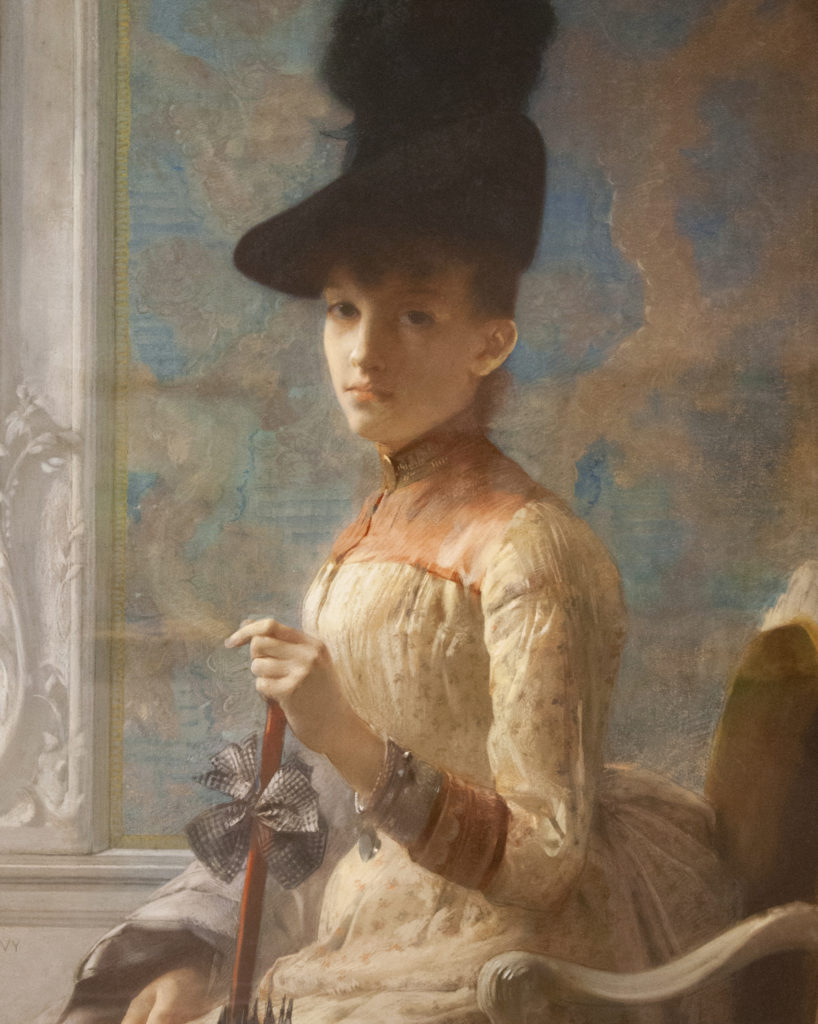The 18thCentury as a Mirror
Although pastel is a technique saw a formidable rise in popularity during the 18thcentury, to the pointed situating itself as an equal in comparison to other techniques, it never managed to fully conquer its legitimacy versus oil painting. Its intrinsic fragility and the fact that it is used as a tool for drafting placed it in an ambiguous position –on the fringe- something that would paradoxically turn out to be its greatest value.
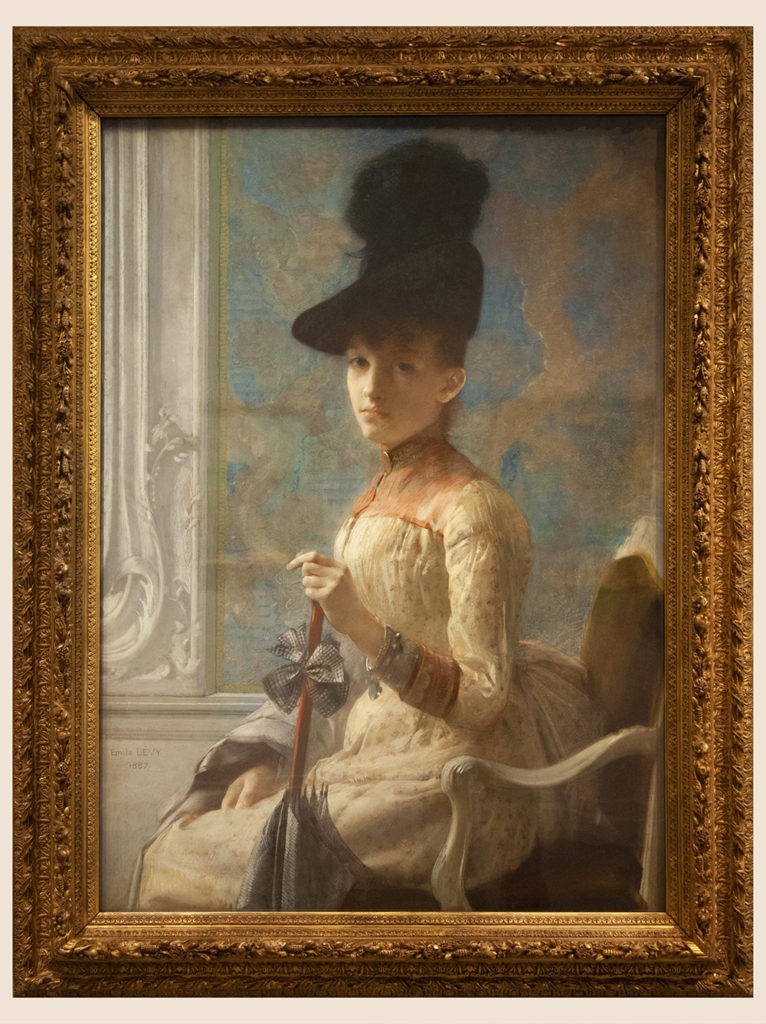
Émile Lévy (1826-1980), “Portrait of Madame Charles Steeg” 1887, ©photo by Bogra art studio, 2019
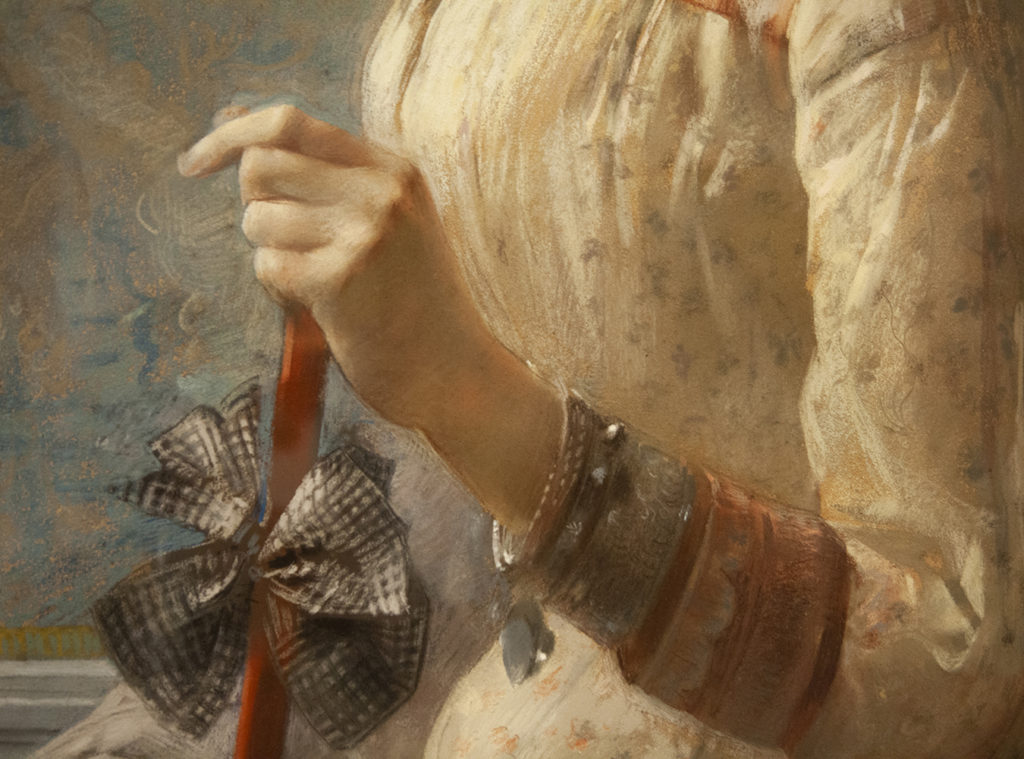
Émile Lévy, “Portrait of Madame Charles Steeg” (detail), 1887, ©photo by Bogra, 2019
When reviewing pastel art during the 19thand 20thcenturies we encounter somewhat of a trend: allusions to the 18thcentury configure a true narrative discourse. This can be observed in an artist as late as Jean Hélion whose pastel self-portrait explicitly references a renown self-portrait by another pastel artist precisely from the 18thcentury: Jean Siméon Chardin.
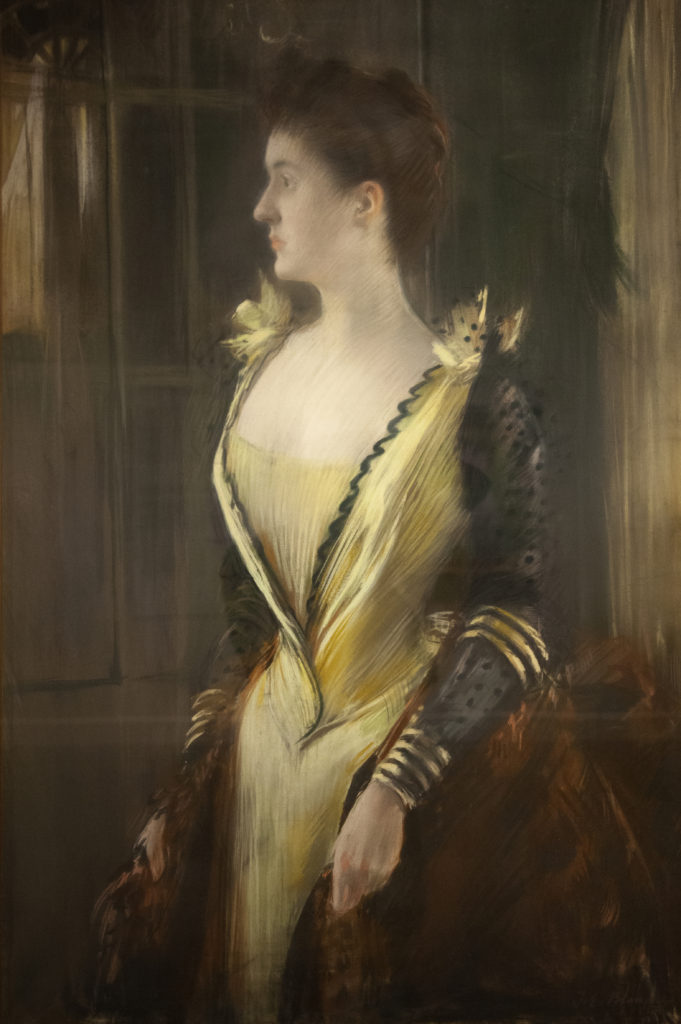
Jacques-Émile Blanche (1861-1942), “Elegant in Yellow Dress”, 1890 ©photo by Bogra, 2019
These echoes are not only a play on tradition. Pastel artists are conscious that they are suspected to practice a type of painting that is second-tier; thus their invocation of the 18thcentury becomes a means to appropriate some of the legitimacy acquired by their predecessors.

Albert Edelfelt (1854-1905), “Louis Pasteur Vallery-Radot”, 1891, photo by ©Bogra art studio, 2019
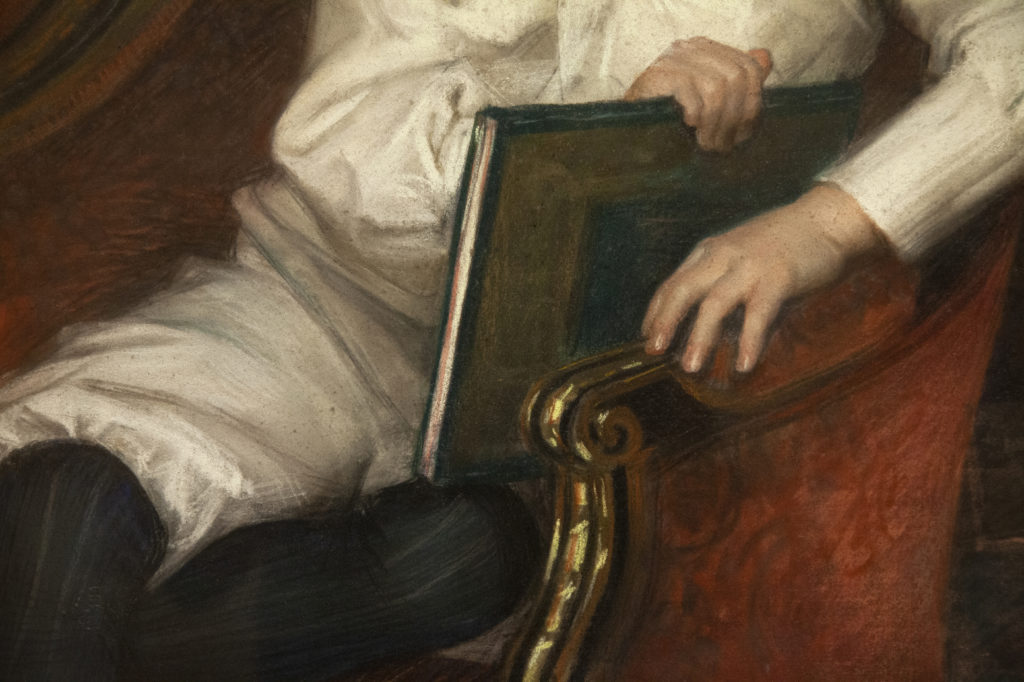
Albert Edelfelt, “Louis Pasteur Vallery-Radot” (detail), 1891, photo by ©Bogra art studio, 2019
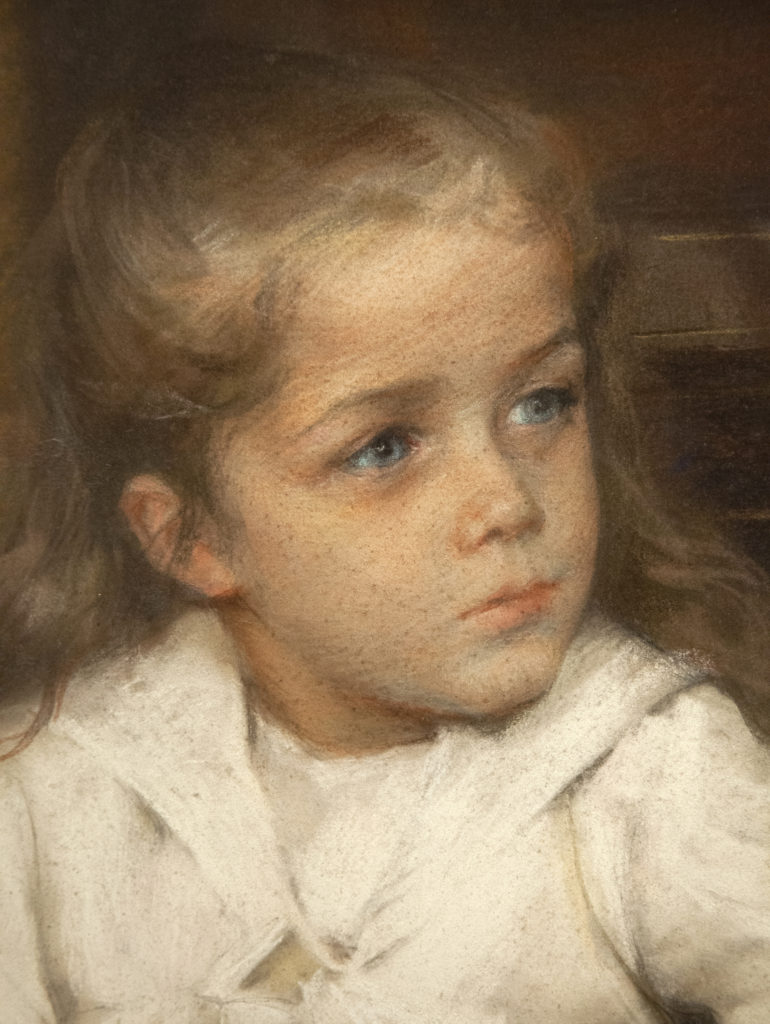
Albert Edelfelt, “Louis Pasteur Vallery-Radot” (detail), 1891, photo by ©Bogra art studio, 2019
Nevertheless, the homage to the prior century can also obey more specific aesthetics motives. 18thcentury pastels with their lightness, charm, elegance, and ease, constitute an invitation to free one´s self from the conventions and rules imposed by academic programs. Jules Chéret, for example, conveyed this notion by electrifying his compositions with energy that critics of the time defined as “fanfare of colors” and “flashes of fantasy”.
The Society of French pastel Artists: An Eclective Collective
In 1885, Roger Ballu, Inspector of “Beaux art de France”, create the French Pastel artists society, specifically charged to “show, develop, and encourage the art of pastel”.

Giovanni Boldini, (1842-1931), “Portrait of Gyp” ,1894, photo by © Bogra art studio, 2019
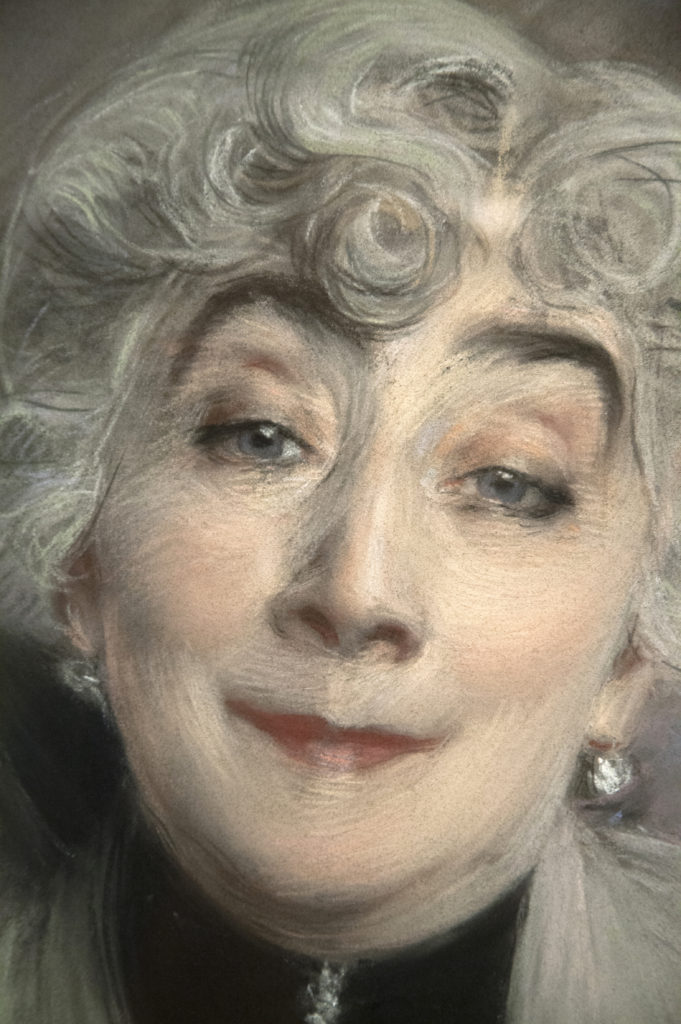
Giovanni Boldini, (1842-1931), “Portrait of Gyp” (detail), 1894, photo by ©Bogra art studio, 2019
In a way, the creation of a structure dedicated to the protection of the pastel indicates that the legitimacy of the technique is still in question. In this sense, the first exhibition in 1885 of the society, which includes numerous works of the masters of 18th century, is an obvious sign; the pastelists, in pursuit of prestige and credibility, seek illustrious predecessors.
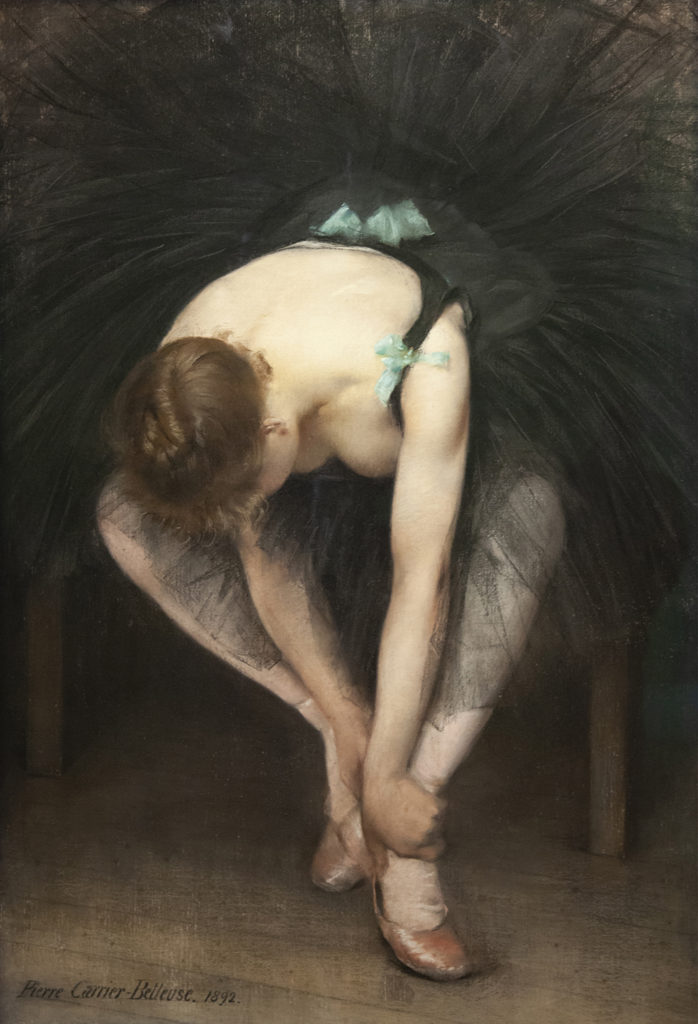
Pierre Carrier-Belleuse (1851-1932), “Ballerina Tying Her Shoe” 1892, (Pastel on canvas) photo by ©Bogra art studio, 2019
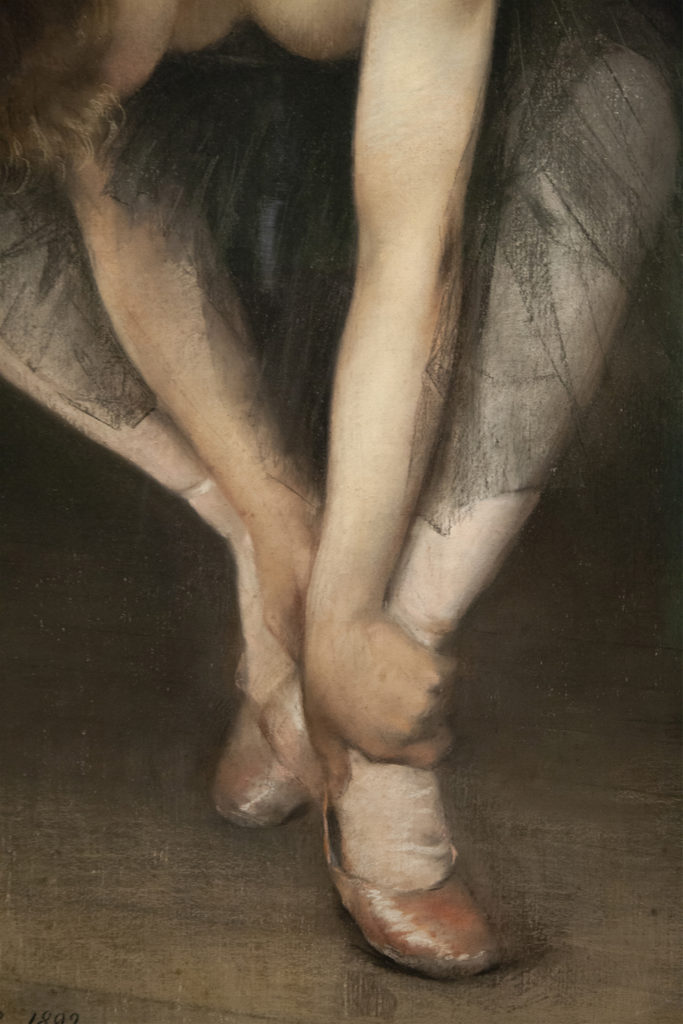
Pierre Carrier-Belleuse, “Ballerina Tying Her Shoe” 1892, (Pastel on canvas) photo by ©Bogra, 2019
The Society, attentive to the talent of its members, does not impose any aesthetic, so that its exhibitions are characterized by eclecticism and thematic diversity; the views of towns that make Jean Charles Cazin famous are rubbing shoulders with the landscapes of Alexandre Nozal while the serene and classic figures of Pierre Puvis de Chavannes, contrast with the much more resplendent of Albert Besnard.
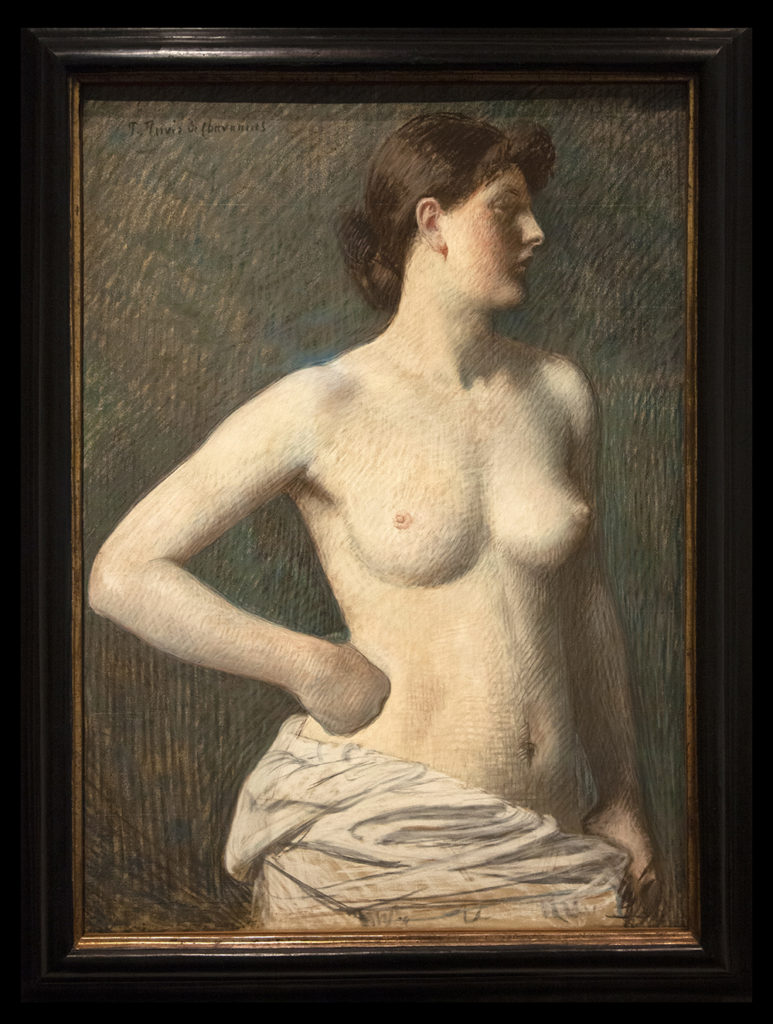
Pierre Puvis de Chavannes (1824-1898) “The model”, 1887, ©photo by Bogra art studio, 2019
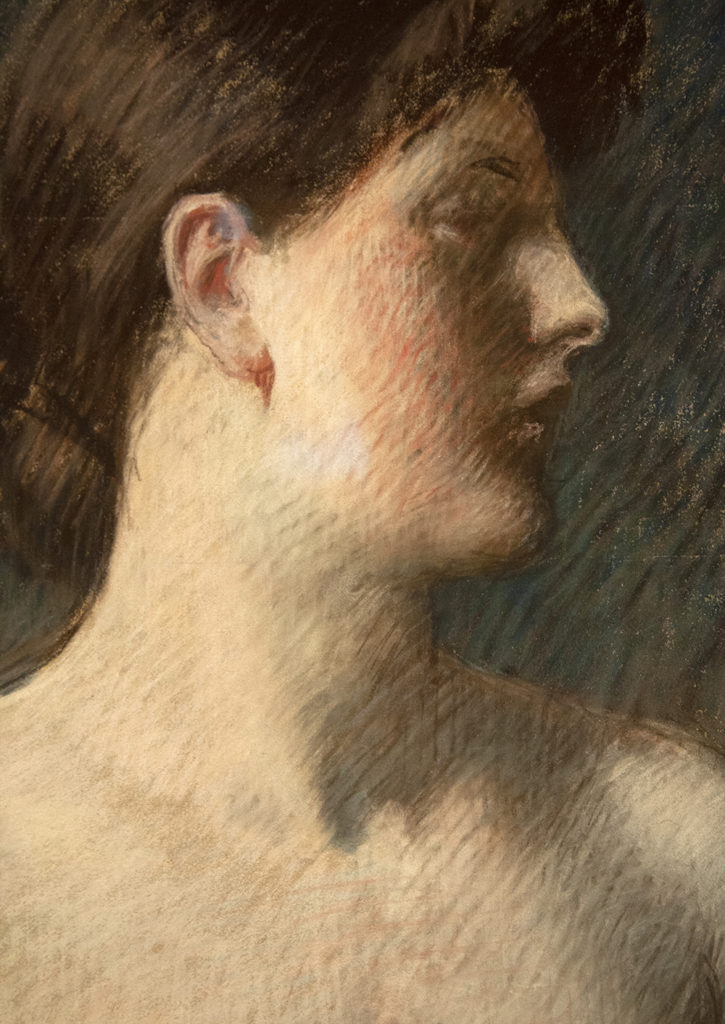
Pierre Puvis de Chavannes (1824-1898) “The model”, 1887, Detail, ©photo by Bogra, 2019
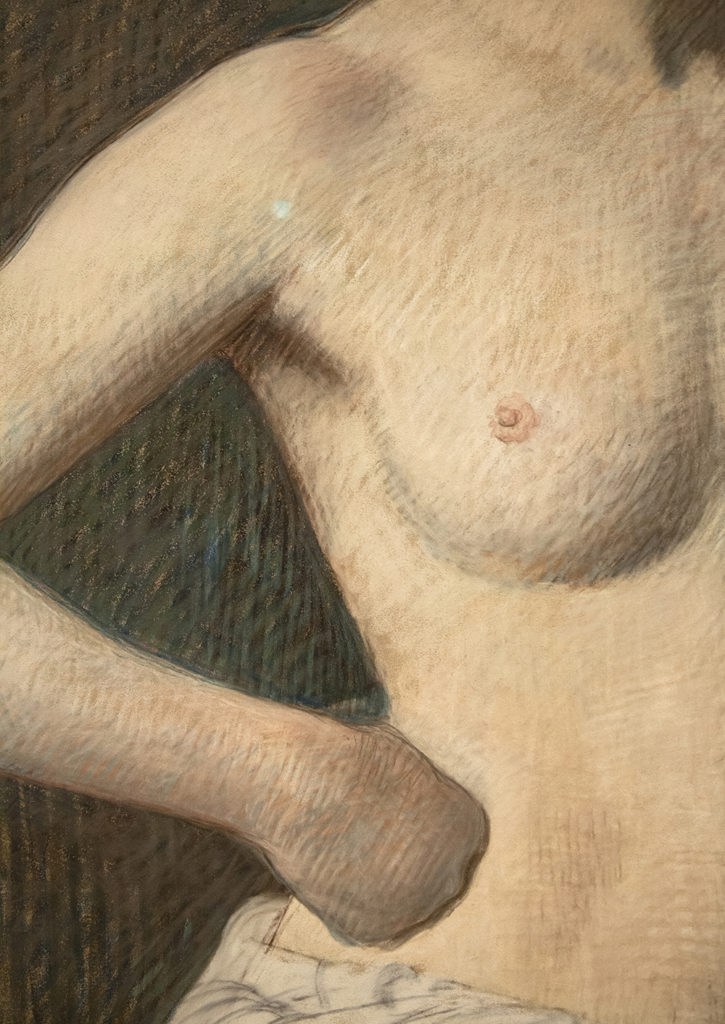
Pierre Puvis de Chavannes (1824-1898) “The model”, 1887, Detail, ©photo by Bogra, 2019
In his thirty years of existence, the French Pastelist Society manages to place this medium under the spotlights. However, recognition ceases to be imperfect since, in the absence of renewal, the society ages and isolates itself from truly innovative artists.
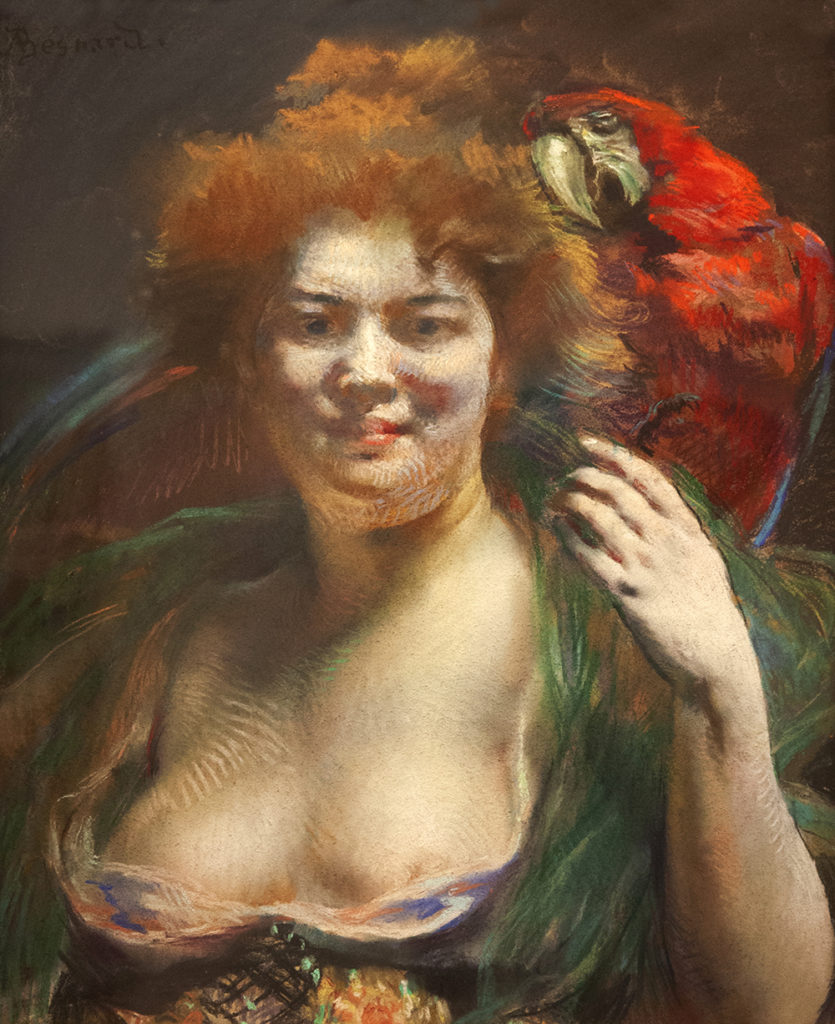
Albert Besnard (1849-1934), “Woman with Parrot”, Pastel on paper, ©photo by Bogra art, 2019
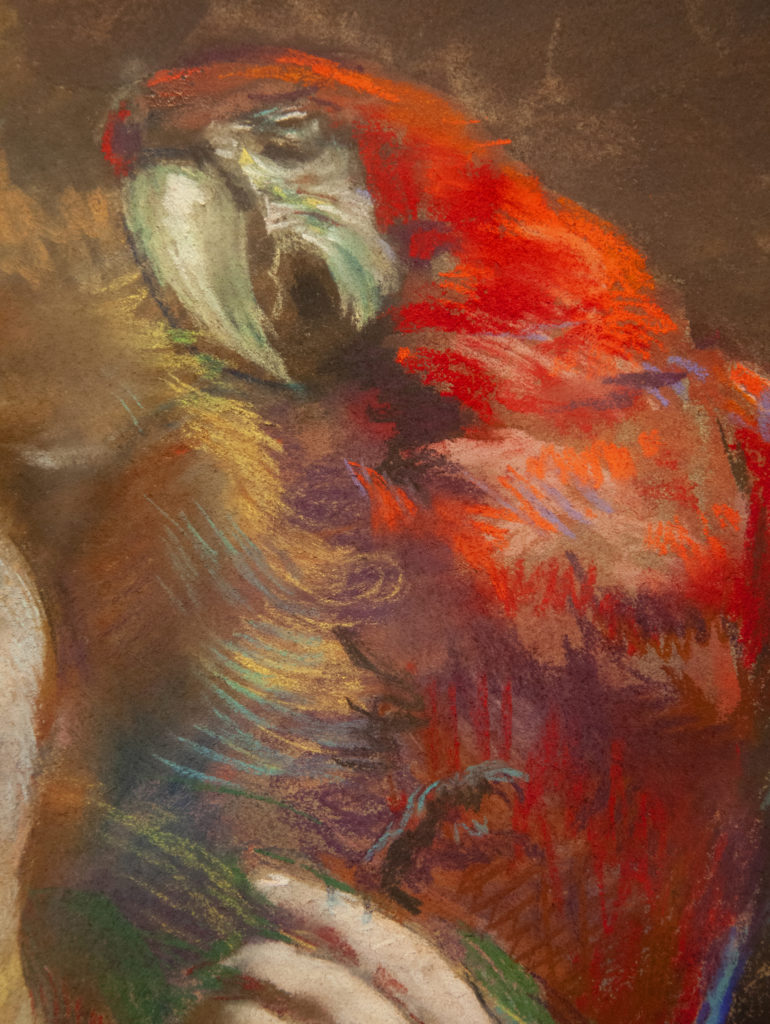
Albert Besnard (1849-1934), “Woman with Parrot”, Pastel on paper, ©photo by Bogra art, 2019
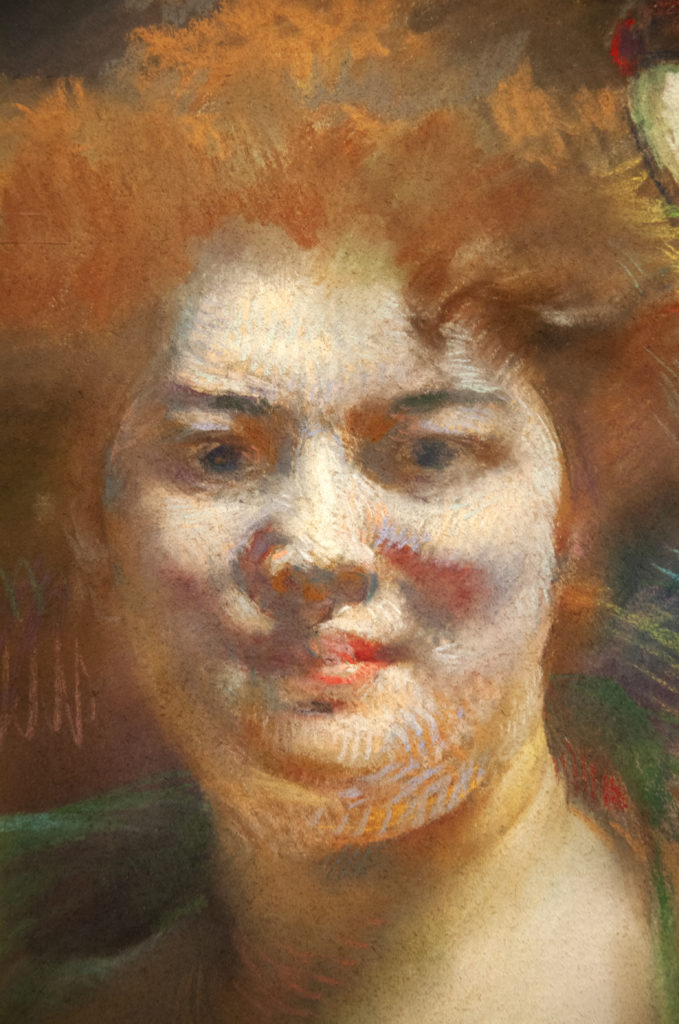
Albert Besnard, “Woman with Parrot” Detail, Pastel on paper, ©photo by Bogra art studio, 2019
And the fact is that neither does it enter into the spirit of modern artists, how open they are to the unprejudiced use of different media, to adhere to a Society that defends one technique over another and continues to put the remote 18th century on the pedestal.
(Texts from the exhibition; “Touching the color, The renewal of Pastel”, Casa Garriga Nogues, 2019.)

